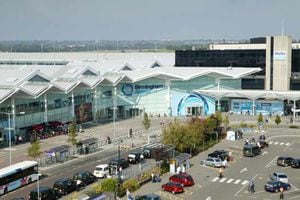Birmingham Airport plans published
Birmingham Airport has published its new master plan for future development following a 12-week public consultation/

The plan outlines how the airport will develop its site to handle the increase in passenger numbers up to the year 2033.
It includes an investment of £500 million that will transform the terminal and create jobs for 34,000 people and generating more than £2 billion in economic benefit for the wider West Midlands.
Consultation included 20 public events in local communities, as well as meetings held with a range of regional stakeholders and community groups.
Over the 12 weeks, 129 responses were received, with the majority of community and residents responding to the set questions via the website. A total of 132 people attended the public events that were held in 20 venues including in Dudley, Sandwell, Walsall and Wolverhampton.
The decision to continue to make use of the existing runway was supported by 77 per cent and 73 per cent were in favour of the airport doing more to maximise employment and economic benefits.
Also 74 per cent wanted to see the airport minimise environmental impacts as it grows.
The most common themes of feedback were around surface access, the environment and flight path changes – as well as a desire to see more flights to the United States and Far East.
Main changes made to the final master plan were around strengthening information on inclusive growth, air pollution and the airport’s commitment to reduce its carbon footprint.
Nick Barton, Birmingham Airport’s chief executive, said: “We’ve applied significant efforts to consult as far and wide, through as many channels as possible, with as many people as we could, to give people the chance to tell us what they think of our future plans. We’re therefore pleased to see that the majority of feedback received was in general support of our plans for growth, which were considered to be sustainable, economically viable and socially responsible.
“Making our future vision available to our neighbours and regional partners gives clarity and guidance and we’re very grateful to all those that took time to give us their feedback. This has helped us ensure that our future plans are right and will benefit our local community and the wider Midlands region.”
The plan and surface access strategy – together with a consultation report outlining the consultation process, all responses and changes to the draft versions – can be found via the airport’s website – www.birminghamairport.co.uk
Birmingham Airport is the UK’s third largest airport outside London, and the UK’s seventh largest overall. It currently handles around 13 million passengers a year and offers more than 150 direct scheduled and charter routes.
Over the last 10 years, Birmingham Airport has already invested more than £300 million to develop its infrastructure.





